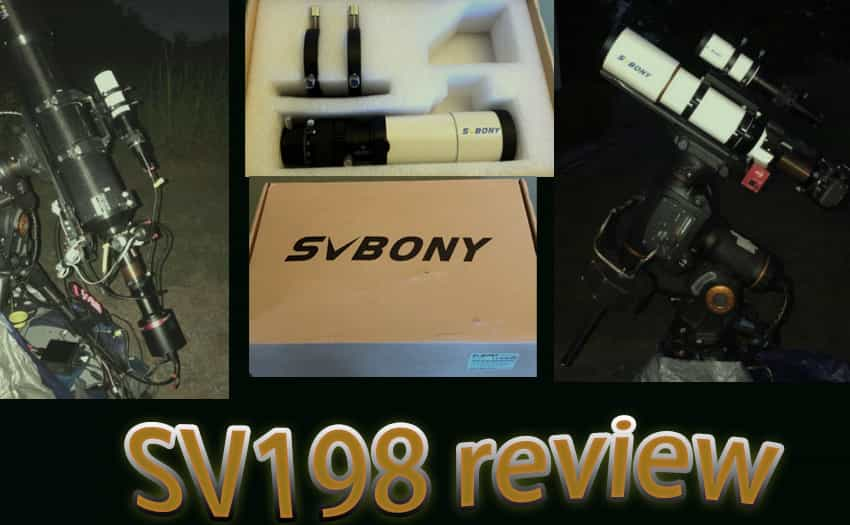SV198 Guide Scope (1)-Guidescope review

SV198 Guide Scope (1)-Guidescope review
1. Introduction
1.1 The unit I received was shipped from China and arrived in just 5 days. The packaging was excellent, as shown in the images below. It is comprised of the telescope/focuser assembly and the mounting rings on a finder dovetail base.
The SV198 link: https://www.svbony.com/sv198-mini-50mm-guiding-scope/
Pros: Large aperture, Easy to focus, Light weight, Dual focus (rough focus/Helical focus) allows for wide range of uses.
Cons: The mounting rings may not be as solid as an attached finder shoe would be.
Conclusions: I was very pleased with the SV198 for guiding and would recommend it for use on larger imaging systems. The dual focusing system has enough range to allow for the use of a wide range of guide cameras.

1.2 I had tested the SV165 guide scope previously and found it to be a good guide scope, but, at the time, I worried that such a short focal length (120mm) would be sufficient for larger focal length telescopes. Although it worked well on my 80mm scopes and even on my 127mm ED imaging scope, I wanted to try a longer focal length guide scope.
In the meantime, I became involved in another project that was setting up multiple imaging setups for the 2024 Solar Eclipse. For that setup, we are using a Raspberry Pi HQ camera and I was looking for a telescope in the 200mm focal length range to evaluate. SvBony sent me the SV198 guide scope and it seems to fit both of my needs quite well. I will break this review into two sections, Guide Scope and Imaging Scope.
2. Guidescope review
2.1 Introduction
I tested the guide scope with my Explore Scientific ED127CF 127mm f/7 telescope and a QHY294C camera. I also tested with a SvBony SV503 80mm f/7 telescope with a Canon EOS Rebel T7 DSLR. Both were mounted on a Celestron CGEM mount and are shown below. In both cases, the guide camera was a Starlight Express Lodestar X2.

2.2 SV198 & SV165 mounting comparison
Unlike the SV165 guide scope, which uses a finder shoe attached directly to the guide scope, the SV198 uses mounting rings attached to a finder shoe plate with adjustment screws. The advantage is the ability to align precisely to the imaging telescope or to offset the scope to allow for finding a brighter guide star. However, this comes at the cost of a less rigid attachment to the imaging scope. One other advantage of using a finder shoe plate is that it can be mounted directly to a telescope and not have to use the finder dovetail clamp at all, making for a more rigid connection. (See holes in the dovetail plate in the image below)
 2.3 Guiding results
2.3 Guiding results
The images were taken with the ED127 and the QHY294C showed round star images with no signs of trailing. The images below show the star images as well as the PHD2 Status screen. I had intentionally left the polar alignment about 20 minutes off to force the system to make up for the polar alignment error in guiding. That is why you see multiple corrections in the PHD plot. The results were excellent.


I was very pleased with the SV198 for guiding and would recommend it for use on larger imaging systems. The dual focusing system has enough range to allow for the use of a wide range of guide cameras.
To be continued.








